This DIY tutorial is sponsored by Lowe’s Home Improvement and is designed to help you understand the basics of pressure washing, some handy accessories and the capabilities of new electric models.
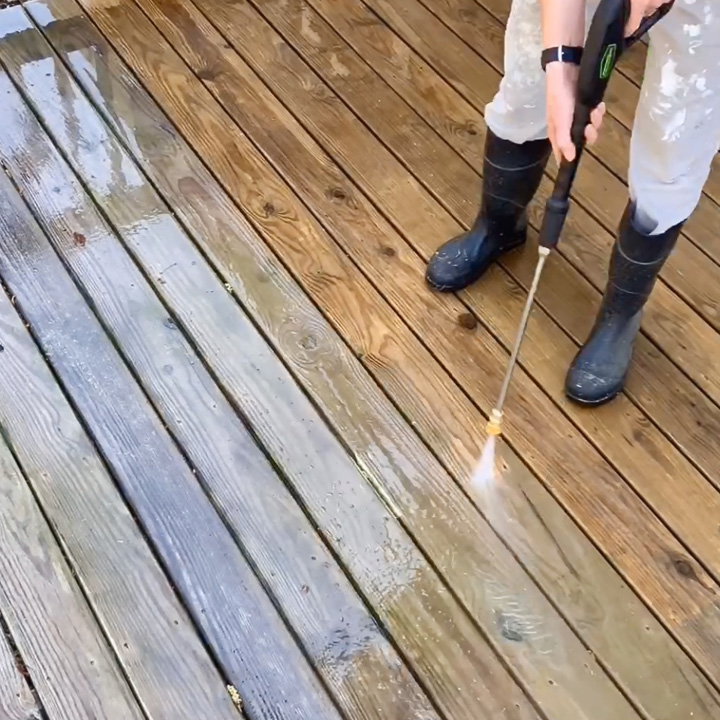
Spring is a great time to clean the exterior of your home (especially this year when a lot of us are trying to find things to do to keep busy around the house)! The winter grime and spring pollen can really build up and in one day you can really freshen everything up with a pressure washer.
Pressure washing (also known as power washing) uses waterflow from a garden house and dramatically increases the water pressure using a motor and pump. Typically this is done through a small gasoline motor and can create water pressure up to 4000 psi. However, more companies are now producing powerful and capable models that are run with electric motors.
How do pressure washers clean and why are they more effective than just rinsing with a garden hose? Dirt and grime is attached to surfaces with fairly high adhesive forces which have to be overcome to remove it. Typical garden hose pressure can be increased by adding a nozzle but the effective pressures are still fairly low and unable to effectively remove grime from most surfaces. Pressure washers use very small nozzles to build pressure and the pump provides a high water flow rate relative to the nozzle size. The result is that most surfaces can be stripped of the surface contamination.
I ordered a Greenworks Pro 2300 PSI model from Lowe’s.com to do all my cleaning this spring! I previously have used gas models and while they do provide awesome cleaning power, for most homeowners I think that this Greenworks model is a great option. It felt capable for all the cleaning activities that I undertook. With the electric model you don’t have to worry about motor maintenance (especially winterizing), there are no harmful emissions to breath in over prolonged use and it is much quieter (and it shuts off completely when the trigger is not being depressed).
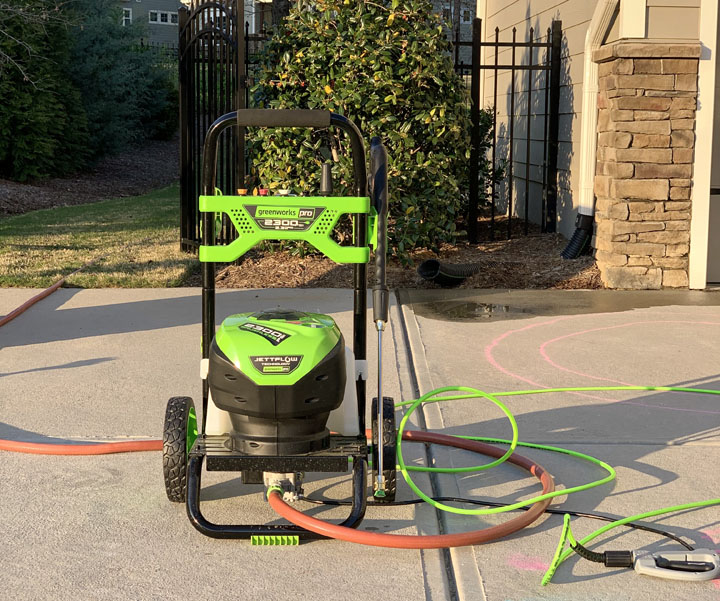
What can you clean with a pressure washer? Pretty much anything! The most traditional uses are for cleaning hard surfaces like concrete driveways and walkways and decking. I used mine to clean our back deck that is made of pressure treated lumber. I had neglected cleaning it for a few years and there was a significant amount of grime and mildew on the surface of the boards which was easily removed using a sweeping motion. I was able to wash the whole deck in a matter of about 30 minutes.
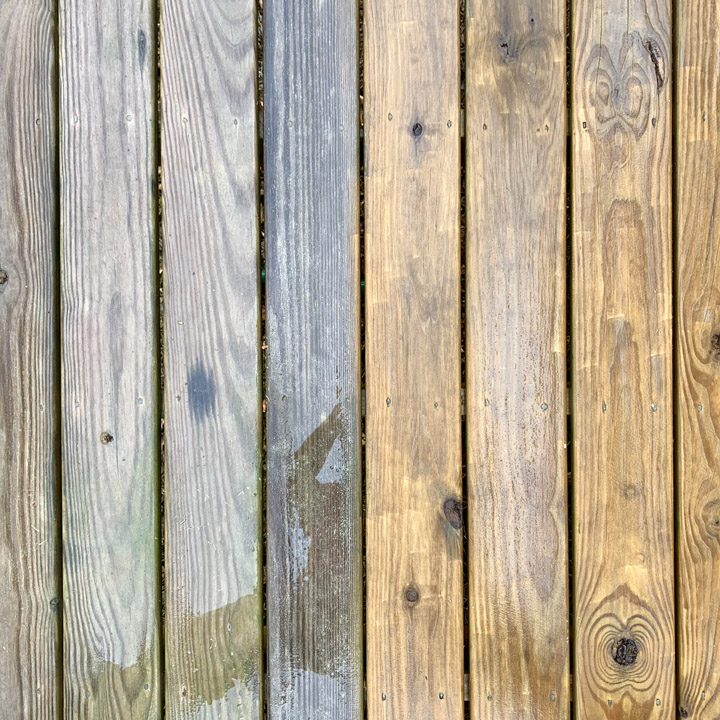
Nozzles
The Greenworks 2300 pressure washer came with four different quick change nozzles: a 15o, 25o, 40o and a turbo nozzle. The nozzle defines how wide the stream of water will spread when it is sprayed out. A lower angle nozzle makes a narrower stream and thus will give the highest effective pressures. You would use this nozzle when working to remove stuck on dirt on hard surfaces like brick or concrete. The 25o nozzle has a wider spread (and thus slightly lower effective pressures) and is often used to clean wood surfaces. Even with this nozzle you still want to maintain a distance of a few inches between the nozzle and the wood surface (as seen in the image below) or else you could permanently scar the wood while you are cleaning it. The 40o nozzle is best for cleaning soft or more delicate surfaces because of the lower effective pressures.
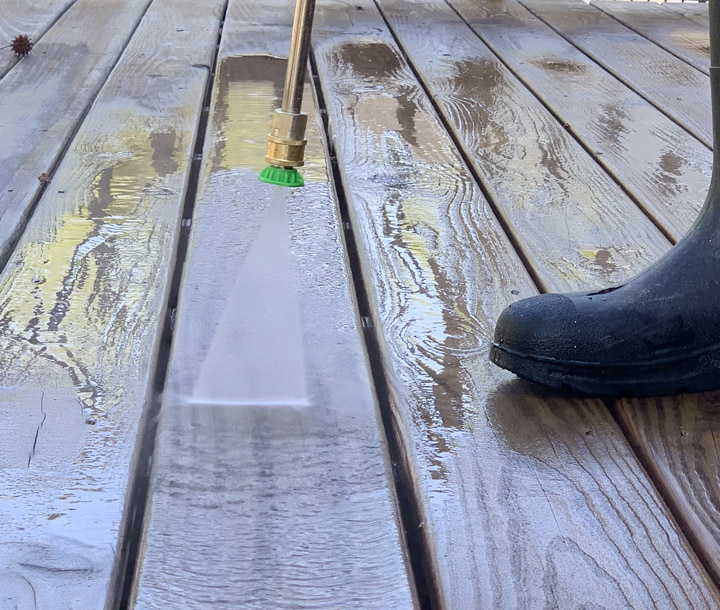
Cleaning Agents
Pressure washers do a great job of cleaning on their own but there are some cases when an added cleaning agent still comes in handy. The greenworks pressure washer comes with a tank that you can fill with a cleaning agent to dispense before washing. The cleaning agent is applied at low pressure, typically you let it soak for a few minutes and then you can start pressure washing before it dries. On my deck I wanted a little extra cleaning power so I pre-treated with Mold Armor cleaner prior to pressure washing it.
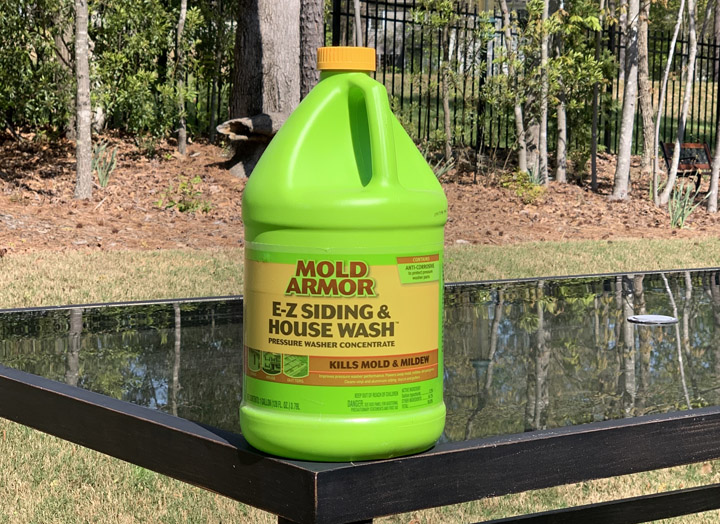
Pressure Washing Accessories
Pressure washers do a great job of washing anything you can get the nozzle close to. However, the further the stream of water gets from the nozzle, the more it spreads out and the effective pressure decreases. At a distance of more than about five feet the stream of water really just turns into a low pressure mist. For applications like house washing it is handy to have a few accessories to 1) get the pressure washer tip closer to the house higher up and 2) create a tighter stream of water so it has higher effective pressures at longer distances. I tried out a few of these accessories and they really do make a difference when cleaning up high! (Before you pressure wash your house you should check to make sure the type of siding you have is compatible with pressure washing)
If you an need extra reach, the first accessory I recommend is an extension wand. I ordered a SurfaceMaxx Pro which gives the user a 9 ft extension. It is very dangerous to pressure wash from a ladder, so this added extension really makes a difference when trying to reach high spots on the house from the ground. Almost all pressure washers use universal fittings, so this wand should be compatible with most, including the Greenworks Models.
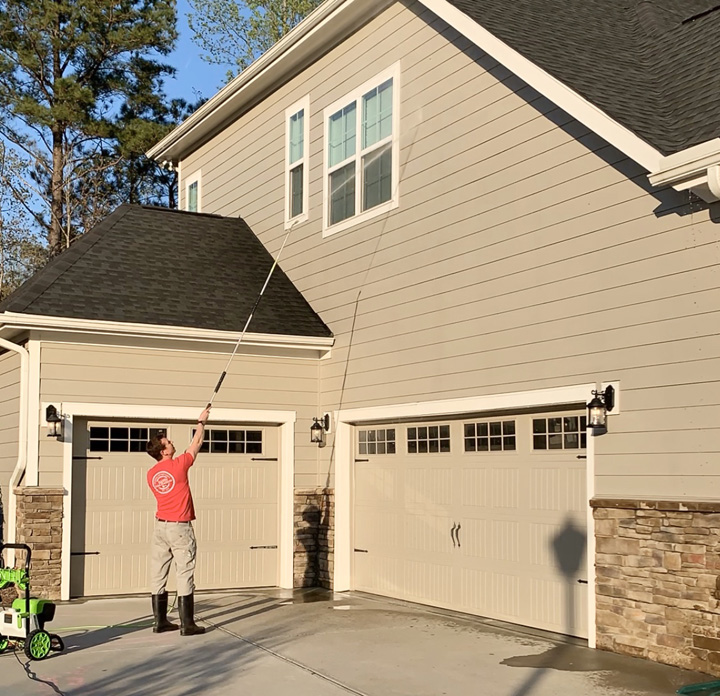
For added reach you can also buy a second story nozzle kit. These add-on nozzles have a circular hole instead of slit so they produce a circular stream of water instead of a fan shape. This allows the water to travel a farther distance before spreading out, giving the user a larger effective range. With this nozzle I felt that I could efficiently clean the siding on our house from about 10 ft, which was a significantly farther distance than with the 15o nozzle!
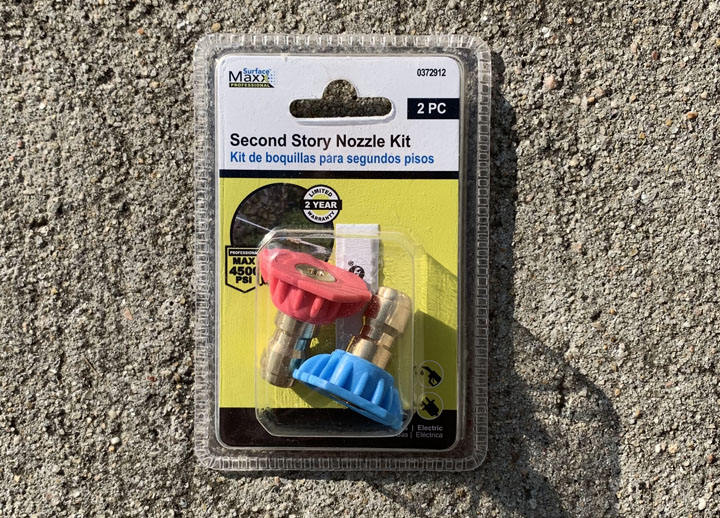
Finally, if you want to apply cleaner to your house it’s nice to have a high pressure soap applicator (seen below). The soap dispenser on most pressure washers only operates at low pressures and so it is hard to reach the second story with soap or cleaners. The high pressure soap applicator dispenses the product into the high pressure water stream so you have the same range as you do with water only washing! I used the same Mold Armor pressure washing concentrate in mine. I’ve heard that this accessory is also great for washing your car!
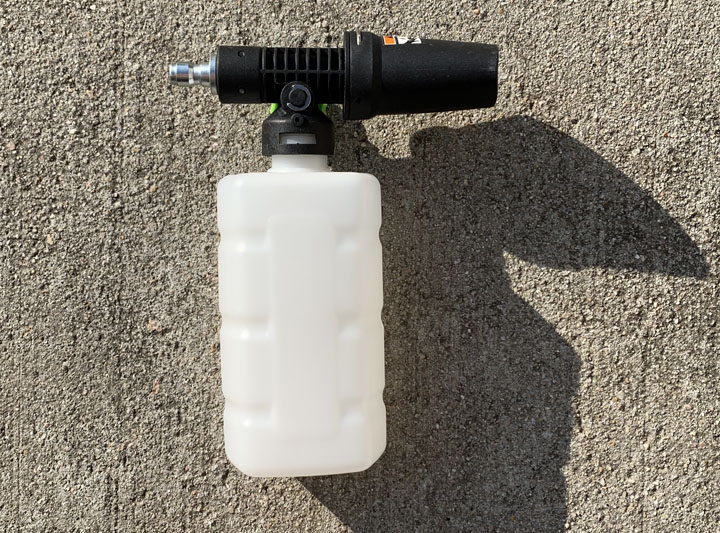

There are so many things that you can pressure wash it really is worth the investment to own one. Electric models are really affordable, low maintenance and have enough power to meet the demands of most typical homeowners. If you have more questions about which pressure model might be right for you, head to Lowe’s, they have experts on hand which can help guide your selection!
Want to see some really satisfying videos of things getting cleaned? Follow me on Instagram and find my story highlight on Power Washing!

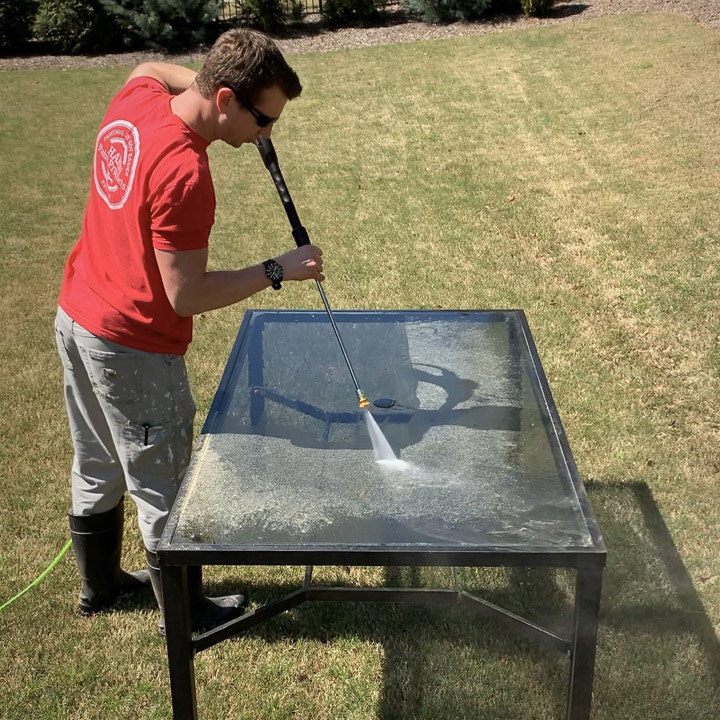
Hello
I love your tutorials, they are very informative! I was wondering if you use an exterior stain/sealer on your outdoor wood? Deck? Fence? Do you recommend a brand?
I have typically used Cabot oil based stains on my outdoor wood!